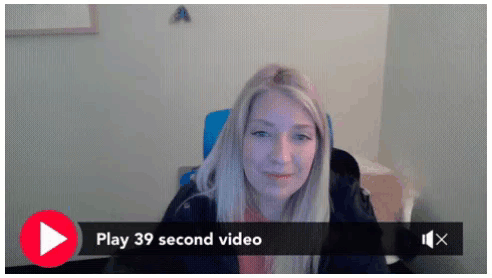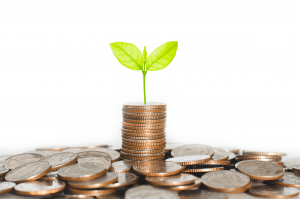The livestream is over. You’ve reached your fundraising goal. Your virtual event has gone off without a hitch. Now what? How do you keep your virtual event attendees engaged and giving after the fun has come to an end? You need a post-event communication strategy!
It’s in your best interest to develop your post-event communication strategy before your event. Give yourself time to determine what the plan is and what resources you’ll need to make the communication strategy work.
Curious about what goes into a great post-event communication strategy? Read on for best practices that will help increase donor retention and engagement after your virtual event!
Send a prompt thank-you
This first step of your post-event communication strategy is obvious to professional fundraisers. Thanking your attendees for coming, fundraising, and donating is key to making donors feel good about their virtual event participation. During the registration process, your attendees likely shared their phone number, home address, and email address with you. Any of these communication methods make for a great way to say thanks quickly. Just be sure to prepare your thank-you message ahead of the event so you’re ready to start thanking in a timely manner when your virtual event ends.
Saying thanks over the phone
If your virtual event had a manageable number of attendees, try thanking each attendee with a phone call. If phone numbers were a mandatory part of the registration process, it’s easy to call after the event and thank them for attending. A phone call can also be an informal way to ask for feedback about the virtual event. Your supporters will likely appreciate having someone from the organization call to express their thanks, chat with them about the event, and even share how much was raised and how those funds are going to be used.
Don’t rush into the phone calls without a plan. Instead, develop a script that lets you get the most of your post-event communication with virtual event attendees. Bloomerang developed a simple script to elevate post-event follow up calls. Essentially, the conversation can be broken down into four simple steps:
- Thank them for their participation
- Ask what they thought of the virtual event
- Be quiet and listen to their feedback
- Ask one of two questions below depending on whether you’re talking to a donor or non-donor
a. Is there any way you could see yourself becoming involved with us? (if not already a donor)
b. Is there anyone else you can think of that we ought to invite to a (event name/type)? (if already a donor)
If your call list is large, prioritize other ways of thanking event attendees. That said, identify high profile donors, board members, and top fundraisers and thank them personally with a phone call.
Thanking attendees via mail
For larger guest lists, calling each virtual event attendee won’t be practical. Instead, if you collected home addresses for event participants, send a thank-you letter to each attendee. You can send a typed form letter, but try to have the sender sign a copy of each letter rather than using an electronic signature. This personal touch can make a form letter seem more personal.
For even better results, consider handwritten thank-you notes to virtual event attendees. You’ll need a large staff to manage this with large events, but a handwritten card stands out in people’s minds. It will make your organization and the virtual event more memorable for the recipient.
For tips on writing a great thank-you letter, check out our guide to writing incredible thank-you letters.
Thank your supporters by email
Thanking your supporters over email is another option to make a lasting good impression on your virtual event attendees. Emails make it possible to send highly personalized messages quickly and without postage costs. You can customize the email to add your organizations style and branding, so supporters recognize it as coming from you and to as visual appeal.
Emails also make it possible to send personalized, video thank-yous. A video thank-you can feature a volunteer, staff member, CEO, or someone your organization serves. Delivering a thank-you message over video instantly makes the connection more personal and shows the recipient that their contribution to your virtual event was seen and recognized by real people.
Luckily, sending a video thank-you doesn’t have to be rocket science. Tools exist to make the process easy for busy people to record and send messages. A couple resources used by nonprofits for video thank-yous are BombBomb and ThankView. These services enable you to record and embed a video message directly into your email.
The .gif below illustrates what appears at the beginning of a recipient’s email when they receive a message containing a BombBomb video.

Send a post-event survey
Another great way to keep your virtual event attendees engaged after the event is to incorporate gathering feedback into your post-event communication strategy. Create a virtual event survey and collect feedback from your attendees. You can ask about the technology used, the activity, the registration process, etc. Take the feedback you receive to heart and get to work improving the format of future virtual events.
Crafting the perfect survey questions can be tricky. Be sure to ask questions that are relevant to your virtual event. Questions like these will generate useful feedback about your virtual event:
- How did you hear about the event?
- How would you rate our virtual event on a scale from 1-10 with 10 being the highest rating?
- Was it easy to participate?
- Was it easy to donate during the event?
- What was your favorite part of the event?
- What was your least favorite aspect?
- How can we improve our virtual events in the future?
- Is there someone you’d like to see presenting at future virtual events?
- How do you prefer we contact you about future virtual events?
When in-person events are once again the norm, you can use this post-event survey template to help craft your follow-up. New to sending post-event surveys? Here’s a comprehensive list of online survey software to help get you started.
Segment your lists
Whether you choose to reach out via email, letter, or phone, it’s important to segment your lists. List segmentation can help inform the way you’re communicating with supporters after the event. You wouldn’t ask someone who registered but didn’t attend your event to give you event feedback, and you wouldn’t ask your virtual event’s top fundraiser why they didn’t attend the event. Take the time to separate your lists and know who you’re talking to first. Then, tailor your post-event communication to those lists. Each list will need a message personalized to their circumstances. The easiest segmentation you can do is craft two different messages. One list for people who attended the virtual event and a list for those who registered but didn’t attend.
The message for event attendees
For event attendees, express your thanks that they attended and gather event feedback. Then share how much was raised and how you intend to use those funds. Encourage attendees to stay involved with your organization by offering volunteer opportunities, an invitation to a future event, etc.
The message for registrants who didn’t attend
For those who registered but didn’t attend, send a message that expresses that you’re sorry you missed them at the virtual event. Tell them about the event and include how much was raised. Be sure to also explain what those funds will be used for. Because these registrants didn’t attend, skip asking them for feedback about the event. Instead, consider incorporating an appeal in your post-event communication with non-attendees. Let them know you still need support and ask them to donate to your cause.
Conclusion
Who says donor engagement has to drop off after a virtual event ends? With a solid post-event communication strategy in place you can keep virtual event attendees engaged and giving well after your event. Plan your strategy before your event takes place and prepare your thank-you messages ahead of time. With properly segmented lists, prompt thank-yous, and event surveys you can stay on attendees’ minds longer and earn more donations from your supporters.







